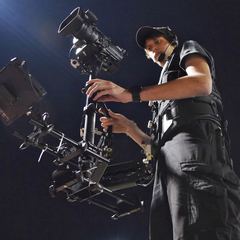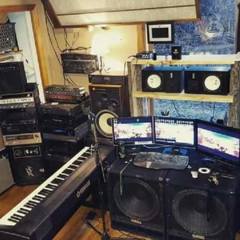-
Posts
96 -
Joined
-
Last visited
Awards
This user doesn't have any awards
About zdog16
- Birthday Oct 26, 1995
Contact Methods
-
Steam
zdogman16
- Website URL
Profile Information
-
Gender
Male
-
Location
Florida
-
Interests
Videography, Computers, Stedicam
-
Occupation
Building Automation Programer
System
-
CPU
Intel i7-3770K
-
Motherboard
ASUS P8Z68-V Pro Gen3
-
RAM
16GB
-
GPU
Nvidia GTX 1080 Founders Edition 8GB
-
Case
Antec Three Hundred Two
-
Storage
1x SanDisk 256GB SSD, 2x 2TB HDD
-
Display(s)
LG 29" IPS LED UltraWide, 2x Acer 21" widescreen
-
Keyboard
Razer Blackwidow
-
Mouse
Razer Mamba TE
-
Operating System
Windows10
Recent Profile Visitors
1,068 profile views
zdog16's Achievements
-
So as a building automation programmer and system engineer I can tell you there is a way better way to do this. But it would require re-designing the system. The American standard Thermostats are probably required because of the factory controls inside the AC themselves only speak their proprietary protocol. It’s probably some Lon or BACNet variant but would still be proprietary and not compatible with anything else. The only way to remove these would be to rip out the factory controls likely voiding warranty on the units, or to purchase AC equipment that does not have factory controls included. That said, the way I would design this system would be to put IP controls on the AC units. Those controllers would be located at the unit and then put a ModBus wall sensor in each room. That sensor could include a display and buttons for setpoint adjust. Then you could use Node-Red on the IP controller to communicate with the relay board and call for in-floor heating whenever the room temp drops below the floor heating. Less devices, more control, home assistant not required but easily integrated.
-
If Linus wants to get rid of the extra stats you could use Loytec Controllers to controls the AC. They are IP based controls that are 100% open. You can get controllers to talk to any HVAC or BAS protocol, and they support Node-Red integration natively so you can build as much integration to Home Assistant as you want. You could send the temperature from the Zigbee stats over Node-Red.
-
What he should do is get a full Building Automation System or BAS. They're more commonly used in commercial applications but I with all the stuff he want's to put together it would be the best solution. I work for a BAS contractor here in the US and we have products to solve every automation issue he brought up in the video. All of the heating valves can be controlled with an IO controller and the 2 conductor wire to all the zones would just be used for zone temperature sensors tied back to the BAS. Furnace and AC would be hooked up to similar IO controllers and the thermostats would also be replaced with room sensors. Everything could be controlled via a webpage or through Node-Red integration to whatever service(s) you want. We even have wall-mount touch screens to control everything. I'd love to help design a system to integrate everything!!
-
Total agree with @LyondellBasell, learn the basics first that will help a lot. My favorite resource to tell people is FroKnowsPhoto on Youtube. He's a little abrasive and has some strong opinions I don't necessary agree with about editing style, but he goes very deep into some basic topics that is hard to find. He's done an in-depth walk through of almost every Nikon camera model including the D3200 so check that out. As Far as editing software, In my opinion the Lightroom/Photoshop bundle from Adobe is the best, but it is a monthly subscription. Whenever I use to the free editors it always feels like there are features missing, but if you are just playing around or starting out the free options are great.
-
If that doesn't work or you just want to cut down on the steps, you could nestle sequences. Basically import the individual clips and line them up in a sequence(you can do this easily by selecting all the clips and dragging them onto the timeline). Then create a 2nd sequence to be your "Master" sequence and import the 1st sequence like it is a piece of footage. You will be able to manipulated it as if it was a singe regular piece of footage. I do this all the time when I have to stitch together multiple shots/cameras.
-
I think it's less your alone and more that your taking a weird route to most people. Decent Chinese camera rigs are getting so cheap on amazon/ebay not many people are taking the time to build something from the ground up like you are. Plus with bigger cameras, sturdiness becomes much more important to keep vibrations and oscillations out of your shot. You are using a pretty small and light camera making it easier to build something that will keep it solid. I applaud you for creating your own solution! keep posting as you come up with more cool stuff.
-
2 of the routers that we tried will not power up on a standard PoE switch, only with the included PoE injectors which require 120v. We confirmed this with the manufacturers. As far as the camera, we are a HikVision dealer and the customer specifically wanted a 360 degree camera. While HikVision does make wifi-compatible cameras they do not make a 360 wifi camera so we had to use a normal PoE 360 and a switch. I was not involved in the pitch/sale part of this project, I was just given a camera and told to make it work. I agree that a wifi camera would have been a much better option but it wasn't my call.
-
Nothing that was meant to be like the camera is overwatching the robot
-
So have a funky one that I need some help on. I work at a company that installs IP cameras and we have a weird situation. One of our clients just bought a robotic autonomous forklift that they want to monitor so we got them a 360 fisheye camera and we need to connect it back to the network so it can be monitored/recorded from the NVR. Problem is because the forklift will be moving around we have to use the power available on the lift itself which happens to be 48v DC. We have a switch that can be powered by 48v and is PoE. the camera is PoE so no problems there but we need a way to connect the camera back to the building's wifi. At first we thought we could use a PoE access point in bridge mode but we are having problems finding one that can be powered by standard PoE and not some funky standard. Here's what we've tried so far Ubiquity M2 Bullet (Non-Standard PoE can't power it up with our switch) Ubiquity airGateway (Non-Standard PoE can't power it up with our switch) TP Link EAP225 (AP only does not support bridge mode) Any suggestions for Wifi routers/Access points that support bridge mode, or some other solution we haven't considered?
-

Doing my first big event!
zdog16 replied to harveychestbreach's topic in Photography and Videography
Show up early, find a safe place to stow your gear if you have any, talk to the client to make sure you understand what they want. If There's a stage or platform of some sort, talk to the acts/stage-manager and ask where you can be, ask if you can get up on stage. Find out ahead of time where you can and can't go then get as close to the Acts as you're allowed to and take some great pics. -

Looking for advice on a surveillance camera.
zdog16 replied to Totallycasual's topic in Photography and Videography
I believe HikVision cameras can do some of that. They are IP based some of them use PoE, some use PoE or a dedicated power supply, but they have on board motion detection, alarms, email alerts(I think). They're going to be more expensive than a ring or something of that kind, but I've had friends find deals on eBay. I found this one with just 1 search, if you dig a little bit you can probably find something in your price range. Since they're IP based you can pull it up in a browser window on your PC and just have it in the background or on another monitor. -
In My Opinion a the Nikon D5XXX cameras are a great starting point for most people, you can get them for a decent price and they take great photos. Kit lenses are great for beginners so I would get a kit with multiple lenses so you can play with it. The D5600 I listed below comes with two lenses so you have a variety It has WiFi and Bluetooth for moving pictures to your phone and it can shoot in RAW so you can get more control over your images. It also takes great video for family events or whatnot. Nikon D5600 + 18-55mm + 70-300mm $846 https://www.bhphotovideo.com/c/product/1308913-REG/nikon_d5600_dslr_camera_with.html Tripods for photos are easy, you can just go down to your local Best Buy and pick out the cheapest for the weight class of your camera. There are some with cool features like carbon fiber or funky heads, but for beginners all you need is the basics. If you are going to do video then the tripod becomes much more important but that's another topic... Manfroto PhotoTripod $97 https://www.bhphotovideo.com/c/product/1059031-REG/manfrotto_mkcompactadv_bk_compact_advanced_tripod_black.html SD Cards get more import as you get faster and more demanding cameras, but for lower level cameras it doesn't make that much of a difference except maybe in dependability but I've never had a card fail. While you'll never probably fill up 64GB with landscapes their cheap and extra storage is always good. I usually have multiple around just in case and to help organize projects. SanDisk 64GB Extreme PRO $36 https://www.bhphotovideo.com/c/product/1282965-REG/sandisk_sdsdxxg_064g_gn4in_extremepro_sdhc_64gb.html Lastly while you don't necessarily need one when you first start, but prime lenses are a fantastic tool for portraits or close up nature shots. They force you to think differently and creatively and give you a really awesome DOF effect. If you have extra cash leftover or if you want to put some more money into it later down the road a 50mm or 80mm prime lens is a great addition to your bag. Nikon 50mm f1.8 Prime - $219 https://www.nikonusa.com/en/nikon-products/product/camera-lenses/af-s-nikkor-50mm-f%2f1.8g.html Personally I would also add an upgraded camera strap. The included one is fine, but it's kinda short and uncomfortable for long hikes or having around your neck for a long time. It also I use the BlackRapid Curve but there are plenty out there to fit you and your camera.
- 5 replies
-
- landscapes
- kit
- (and 4 more)
-
I have kinda an odd situation. So here is a bit of setup... I work at an church that has multiple campuses across the county and we stream the sermons 'live' between the campuses on Sunday mornings. Obviously this requires a lot of communication and ordination. We use UHF radios for on campus communication and a ClearCom VOIP system for real-time campus to campus communications. Recently we got an add on for the VOIP system that allows us to use cell phones as com boxes in addition to the wired belt-packs that are in the sound booth at each campus. This is great because we don't have to be tethered to the desk with the ClearCom. I wear an IFB for my radio so I can hear what's happening on the security channel, but I also want to listen to the VOIP system so I bought an IFB that has a 3.5mm headphone input for my phone. Now here's my problem, the volume level on the 3.5mm input is super low. In a quiet room I can hear the VOIP system, but as soon as there is any sort of background noise it's inaudible. What I think I need is an Amp that can boost the level to something that's audible. I don't really care about audio quality, the earpiece that I use is not designed for high quality sound I just need volume. I tried this one cause it was super cheap and I thought I'd give it a try, but it seems mainly to EQ the sound and really effect volume. What amps would you guys suggest? I would love for it to be Bluetooth, purely for the convenience of not having my phone tethered to me all the time but it's not a requirement, also if there are any options available with lighting cable that would be great also as my current Phone is an iPhone X and again not having to use an adapter is just more convenient.
-
I have not had a lightning to HDMI, but back in the day I had one of the 32 pin to RCA, (yes RCA, apple did make one) for the original iPad. Frankly it was terrible. It only worked with certain apps, mostly Apple Made ones. The few 3rd party apps that did support the adapter often didn't work the way you wanted them to. There was no mirroring, the app HAD to support the adapter, and some content like movies, were locked off for no apparent reason. Granted this was like 5 versions of iOS ago, and original iPad hardware. When we finally got an Apple TV (3rd Generation). It was like night and day, it was easier to setup, if an app doesn't specifically support AirPlay you can just mirror the screen to it. It works with iPhone, which the wired ones at the time did not, and its wireless (which is really convenient). I don't know why you would need the cable specifically, but if it's just cost I would look for a used 3rd Generation apple TV. If you still want a wired adapter, your best bet is going to be the apple made one like @deXxterlab97 said, but there are no guarantees that it will do what you want it to.
-
Projectors are a pain to maintain in home theater situations. You have to replace the lamp(s) every so often in order to keep the image bright(there are laser projectors now that don't have this limitation but they're outside of your price range). They often have to be placed where they are hard to get to when you have to change an input or troubleshoot something. They work great for commercial purposes because it's much more affordable per inch once you get over a certain size screen, even with maintenance, but for home setups it becomes harder and harder to recommend unless your looking for something bigger than 75" inches. I would go with the biggest baddest TV you can find in your budget. Shop around there are deals going all the time.









